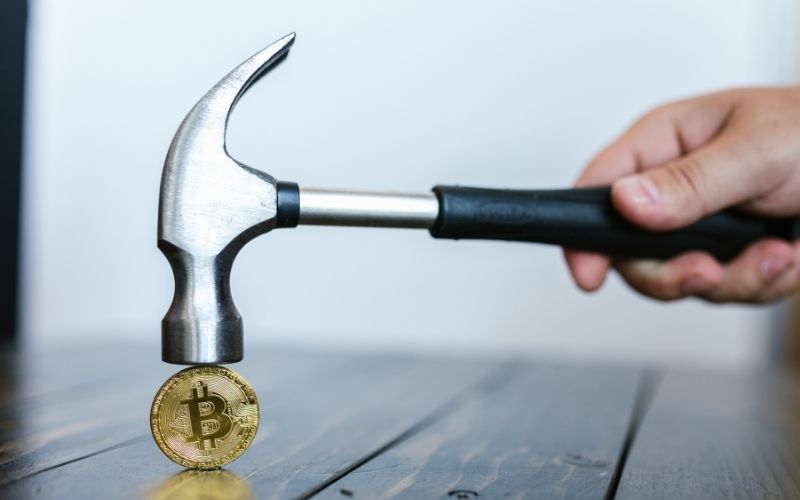Cryptocurrency mining has become a popular way for tech-savvy individuals to earn digital assets like Bitcoin, Ethereum, and more. If you’re interested in getting into the world of cryptocurrency mining, setting up your own mining rig can be a rewarding endeavor. This article will guide you through the steps required to set up your own crypto mining rig and start generating digital currency.
Table of Contents
Step 1: Choose the Right Cryptocurrency
Before you dive into setting up your mining rig, it’s essential to decide which cryptocurrency you want to mine. Some popular options include Bitcoin, Ethereum, Litecoin, and many others. Your choice of cryptocurrency will affect the hardware and software you’ll need, as different coins require different mining algorithms.
Step 2: Assemble Your Hardware
The heart of any mining rig is the hardware. Here are the primary components you’ll need:
Graphics Processing Unit (GPU): Most modern miners use GPUs for mining as they are versatile and can mine various cryptocurrencies. Look for high-performance GPUs with a good balance between power consumption and hashing power.
Central Processing Unit (CPU): The CPU is necessary for running the mining software and managing the overall system. You don’t need an extremely powerful CPU for mining, so a mid-range processor will suffice.
Motherboard: Ensure that your motherboard has enough PCIe slots to accommodate the number of GPUs you plan to use. Consider getting a motherboard specifically designed for mining.
Memory (RAM): A minimum of 4GB of RAM is usually sufficient for a mining rig.
Power Supply Unit (PSU): Choose a high-quality PSU with enough wattage to support all your components, especially the GPUs. It’s crucial to have enough power to avoid system crashes.
Storage: A small SSD or HDD for the operating system and mining software is all you need.
Cooling System: Mining generates heat, so invest in a good cooling system to keep your components from overheating.
Mining Frame: You’ll need a sturdy frame to hold all your components securely.
Internet Connection: A stable internet connection is essential for maintaining your mining operations.
Step 3: Install an Operating System
Most miners use Linux-based operating systems like Ubuntu or specialized mining distributions like HiveOS and SimpleMining. Install your chosen OS on the SSD or HDD, and ensure it’s set up for remote access if you want to monitor your rig remotely.
Step 4: Download Mining Software
Choose mining software compatible with your chosen cryptocurrency. For Ethereum, popular options include Claymore’s Dual Miner and PhoenixMiner. Bitcoin miners often use software like CGMiner or BFGMiner. Download and configure the software according to the instructions provided.
Step 5: Join a Mining Pool
Mining on your own (solo mining) can be highly unpredictable, and it may take a long time to receive a reward. Joining a mining pool is a better option. Mining pools combine the hashing power of multiple miners and distribute rewards based on each miner’s contribution. Popular mining pools include Slush Pool, F2Pool, and Ethermine, depending on the cryptocurrency you’re mining.
Step 6: Configure Your Miner
Enter the pool’s mining address and your wallet address into your mining software’s configuration settings. This ensures that your mining rewards are sent to your wallet.
Step 7: Start Mining
Launch your mining software, and it will begin solving cryptographic puzzles and contributing to the blockchain network. Keep an eye on your rig’s performance and temperature to ensure it’s running optimally.
Step 8: Monitor and Maintain
Regularly check your mining rig’s status, and address any issues promptly. Ensure that your cooling system is working efficiently, and periodically clean dust buildup to prevent overheating. Keep your software up to date and monitor cryptocurrency market trends to maximize your profitability.
Don’t Miss: 10 Ways Blockchain Technology Can Revolutionize Your Business
Conclusion
Setting up your own crypto mining rig can be a profitable venture if done correctly. However, it’s crucial to choose the right hardware, software, and cryptocurrency, as well as to stay informed about industry developments. By following these steps and continuously optimizing your setup, you can join the exciting world of cryptocurrency mining and potentially earn digital assets as rewards for your efforts.
Read Also: Octav Raises 2.65 Million To Help Label DeFi Transactions


Comments are closed.